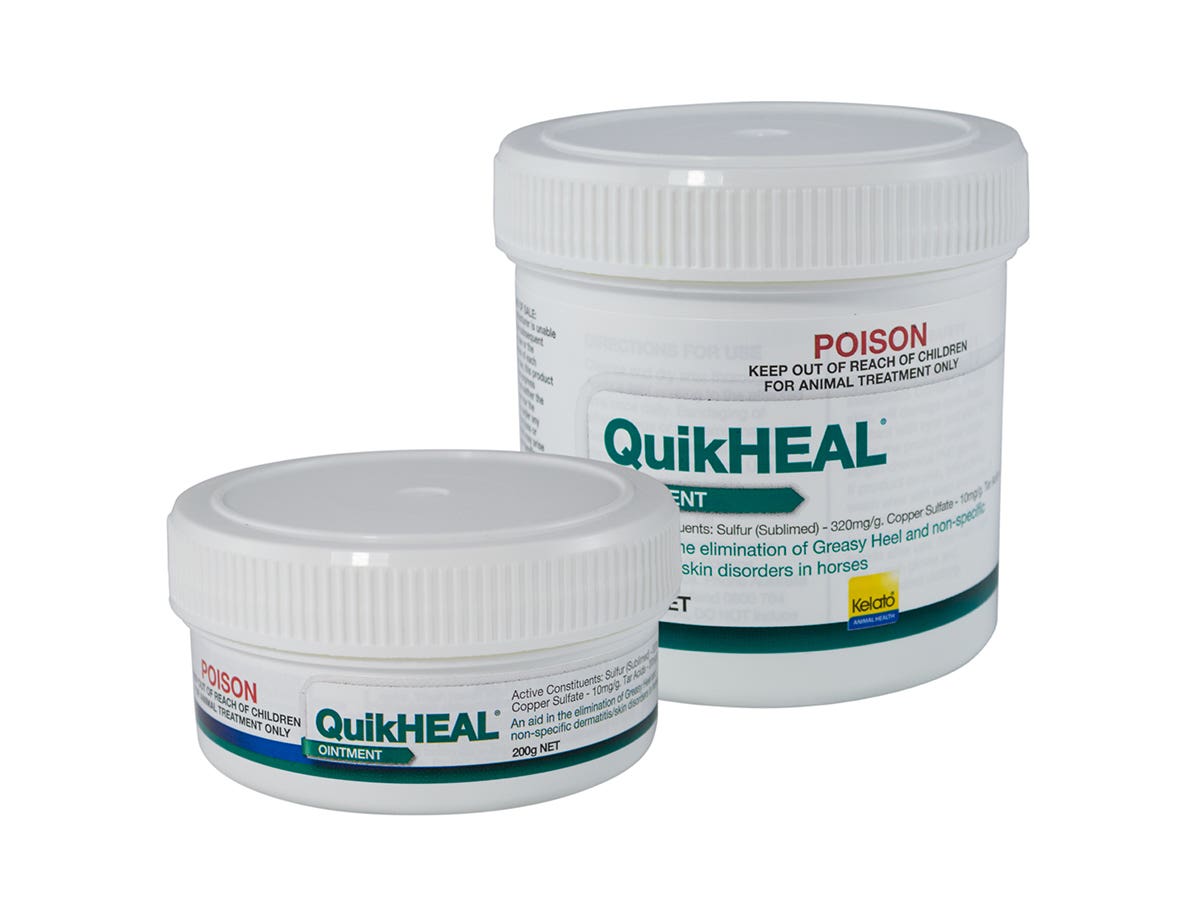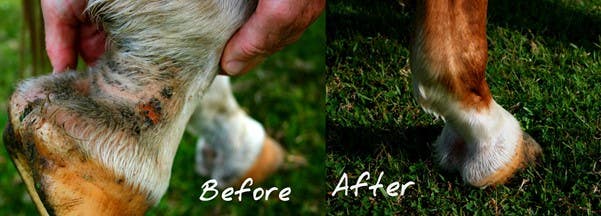

What is it?
Greasy Heel (or also known as Mud Fever) is an inflammatory condition of the skin (dermatitis) caused by bacteria, mites and fungi present in the soil or bedding. It is most commonly found on the lower limbs, particularly in the non-pigmented areas.
Occurrence
Many factors can predispose a horse to greasy heel however higher susceptibility is seen in horses with white limbs and/or feathery fetlocks. Favourable conditions reduce the effectiveness of the skin barrier to invasion by organisms triggering greasy heel.
Favourable conditions include:
- Presence of moisture (constant or repeated exposure)
- Low heel confirmation
- Abrasions to the lower limbs
- Insect bites to the lower limbs
Symptoms
Greasy Heel scabs can appear crusty, scaly, red and inflamed. In severe cases, the scabs can become large, infected and ooze pus and even lead to the development of proud flesh in severe cases. Often the pastern can become red and swollen at first before leading to the development of scabs.
Initially the early stages are not painful but might cause discomfort to the horse through mild swelling. If left untreated, the scabs can become large and cover a larger surface area of the limb and lead to itchiness which can cause further trauma to the limbs, potentially leading to lameness.
Treatment
The key to treating greasy heel is first identifying the factors that are contributing to the disease. Once these factors have been addressed and removed the following steps can be followed:
- Try to keep the lower limbs as dry as possible.
- Soak the affected limbs for 10mins in a warm antiseptic solution, enabling the scabs to soften.
- Try to gently remove as many scabs as possible with a soft rag or cotton wool as organisms often live underneath the scabs. DO NOT cause bleeding as this can lead to further scabs being formed.
- Once removed, hose off with water and pat dry the area.
- Apply an antibacterial and antifungal ointment such as Kelato’s QuickHEAL over the affected area.
- If wet conditions persist, bandage the affected area.
- Repeat steps every 1-2 days.
QuickHEAL is a broad-spectrum antibacterial, antifungal and water-resistant ointment to assist rapid healing of greasy heel and other general skin disorders such as rain scald, dermatitis, ringworm, girth gall, saddle sores and nicks and cuts. The active ingredients in QuickHEAL effectively kill bacteria and fungi and the combination of sulphur and copper sulphate provide an unfavourable environment for organisms helping to prevent re-infection.
Prevention
Housing the horses in a dry, clean environment out of wet muddy conditions is the best way to prevent greasy heel. The wet conditions lead to softening of the skin on the lower limbs allowing the skin barrier to breakdown, increasing exposure to potential invasion from organisms. Treating the disease as early as possible through constant monitoring of the limbs for symptoms will ensure the greasy heel doesn’t progress into a serious stage.


Veterinary attention
During the early stages, the treatment steps should be followed. Veterinary attention should be sort out if the scabs begin to bleed and lead to serious lower limb swelling causing lameness in the horse.
Want to find out more? Head to the QuikHEAL page, get in touch on 1800 KELATO or email technical@kelato.com.au

